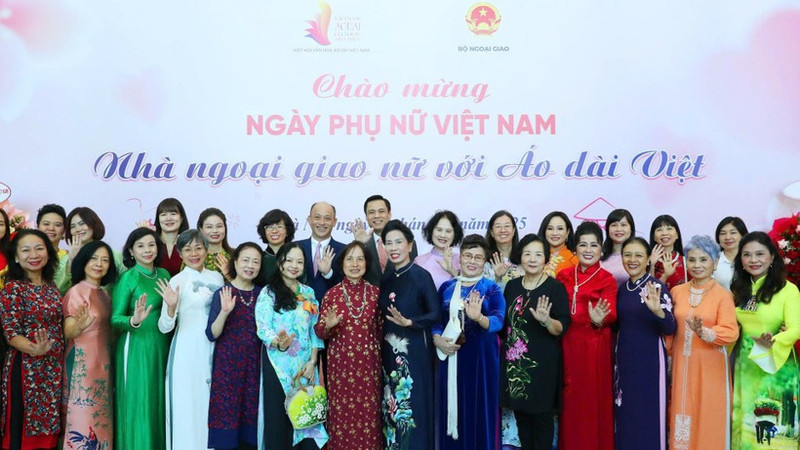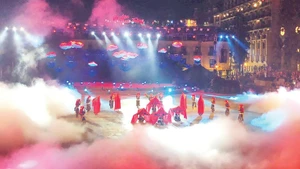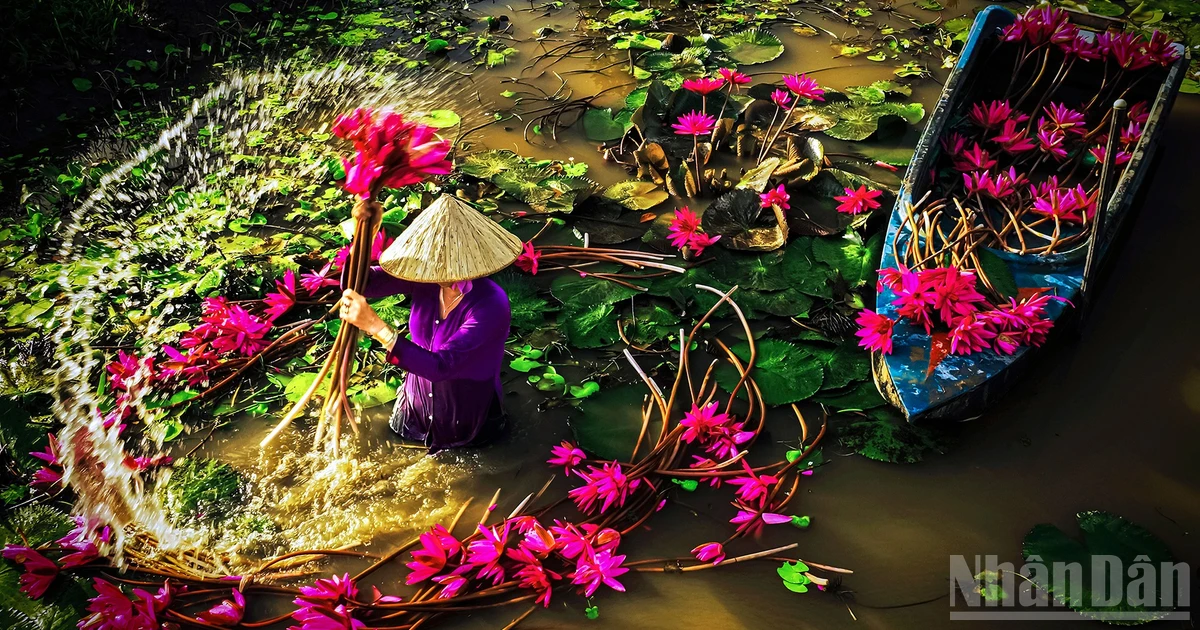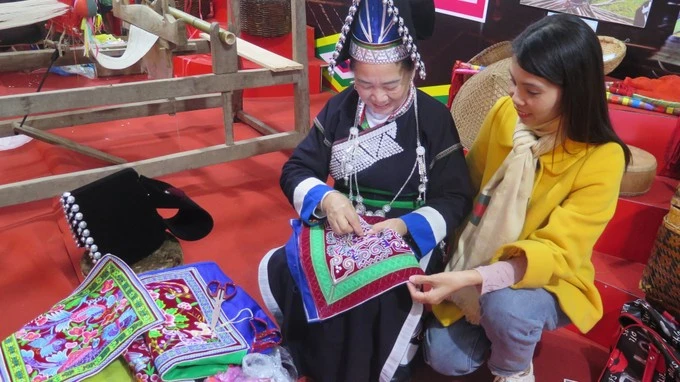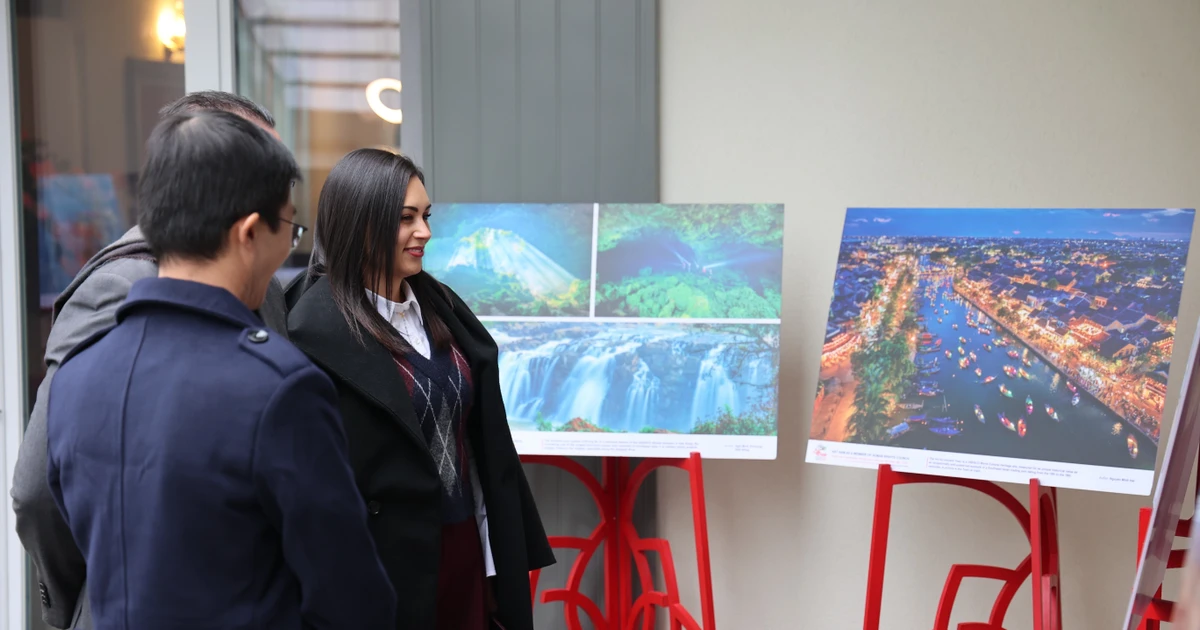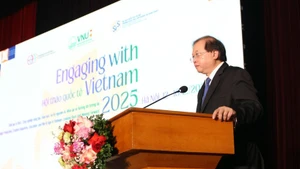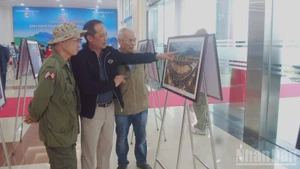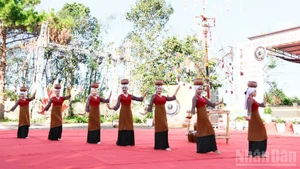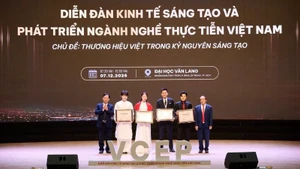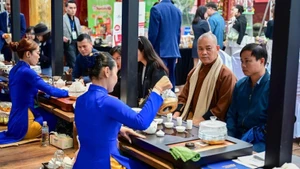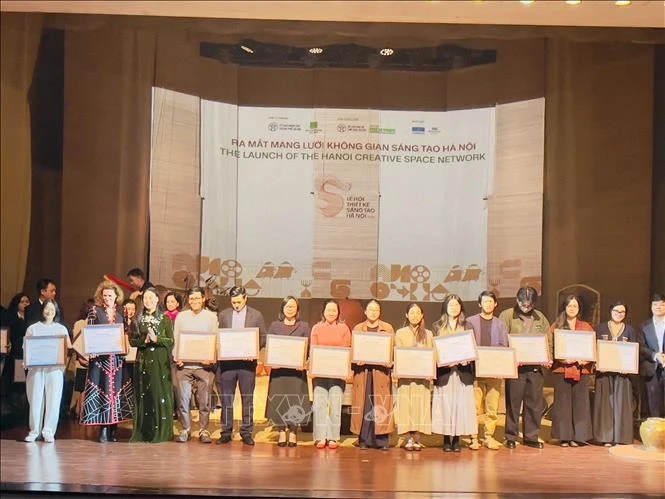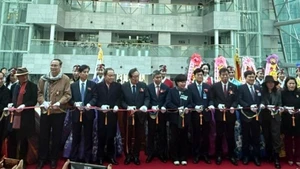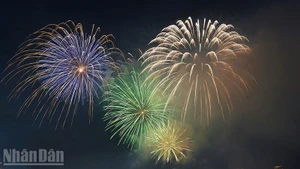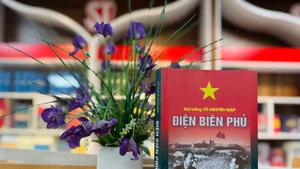Organised by the Department of Foreign Affairs and Cultural Diplomacy under the Ministry of Foreign Affairs in collaboration with the Viet Nam Ao Dai Cultural Association on the occasion of Viet Nam Women’s Day (October 20), the programme became a moving encounter between fashion and diplomacy, between tradition and modernity. The event gathered leaders and officials of the diplomatic service, designers, artisans, and more than 100 members of the Viet Nam Ao Dai Cultural Association.
Pride in every ao dai
In the graceful setting of the Ministry of Foreign Affairs’ headquarters, soft music resonated as groups of female diplomatic officers walked elegantly alongside professional models. They were not merely showcasing fashion but telling their own stories – the stories of Vietnamese women in diplomacy wearing the ao dai.
The programme presented three fashion collections: “Heritage in Ha Noi” by designer Anh Thu of the Ngan An Ao Dai brand; “Viet Nam Brocade” by designer Nguyen Lan Vy; and “Colours of the mountains” by designer Han Phuong of the Viet Phuong Ao Dai brand.
“Heritage in Ha Noi” evoked the vibrant yet alluring rhythm of the thousand-year-old capital through modest yet luxurious silhouettes. “Viet Nam brocade” led the audience into a dance of silk, satin, and gauze, where traditional patterns harmonised with a modern spirit. Meanwhile, “Colours of the mountains” brought the breath of the highlands to the city, telling stories of villages through vivid colours and brocade embroidery techniques.
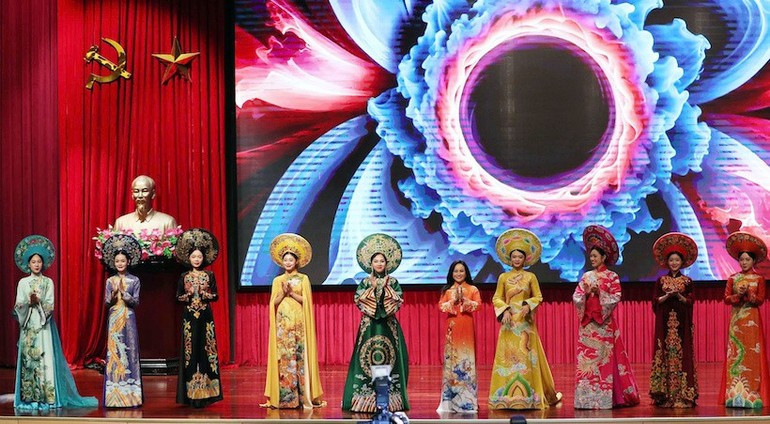
The combination of female diplomats and professional models was a creative highlight, turning each performance into a message: Vietnamese female diplomats are not only envoys of foreign affairs but also cultural ambassadors, spreading the beauty of the ao dai to friends across the world.
Deputy Minister of Foreign Affairs Dang Hoang Giang, in his remarks, extended his congratulations to all women in the diplomatic sector, affirming: “The ao dai is not only traditional attire but also a symbol of identity, intellect, and the beauty of Vietnamese women. In foreign affairs, the image of female diplomats in ao dai contributes greatly to promoting a friendly and open image of Viet Nam to the world.”
Ambassador Nguyen Phuong Nga, former Deputy Minister of Foreign Affairs and President of the Network of Vietnamese Female Diplomats, also shared that the ao dai has become a symbol accompanying women diplomats through the journey of nation-building and international integration, across many multilateral forums.
From a cultural-heritage perspective, Dr Dang Thi Bich Lien, President of the Viet Nam Ao Dai Cultural Association, remarked: “The ao dai is a living cultural masterpiece, embodying harmony between tradition and modernity. Each ao dai worn by our female diplomats conveys a gentle message to international friends about a graceful, confident and proud Viet Nam.”
Le Thi Hong Van, Director of the Department of Foreign Affairs and Cultural Diplomacy, expressed her pride when seeing her colleagues in ao dai: “Women in diplomacy are not only bridges of peace but also cultural envoys, contributing to spreading the Vietnamese identity worldwide.”
From tradition to the future
Throughout Viet Nam’s diplomatic history, the ao dai has appeared in many important moments. The image of Minister Nguyen Thi Binh at the Paris Conference, or of the first female ambassadors of Viet Nam at the United Nations, remains etched in international memory for their elegance and the determination of Vietnamese women. Through each era, the ao dai has been more than an aesthetic choice—it has been a message of culture, peace, and national identity.
Today, in the context of global integration, the ao dai enjoys new opportunities for development as various cultural industries receive greater focus. The creativity of designers, coupled with national cultural policy orientations, opens a new path for the Vietnamese ao dai—preserving tradition while becoming an economically valuable product that promotes the country’s image. Honouring and enhancing the value of the ao dai is not only a cultural need but also a necessity of our time.
The ao dai should be regarded as a national cultural asset, with well-defined strategies for preservation, training, and innovation. Programmes connecting designers, artisans, schools and businesses can help integrate the ao dai more deeply into modern life. At the same time, encouraging the wearing of ao dai in political, diplomatic, educational, and tourism events will inspire its natural and sustainable presence in society.
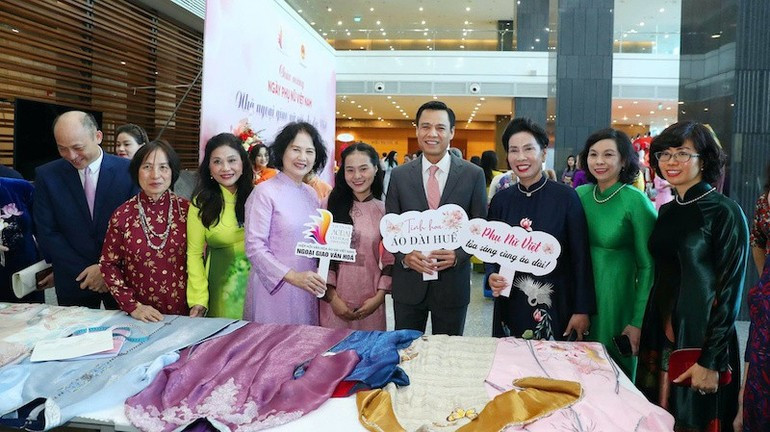
At the “Female diplomats with Vietnamese ao dai” event, the ao dai was not only displayed on stage but also through an exhibition showcasing the meticulous process of its creation—from dyeing, weaving, and embroidery to handcrafted decoration by artisans from traditional craft villages. Each piece of fabric and each stitch was introduced like a “page” telling the story of the craft’s history and the creative spirit of the Vietnamese people.
The collaboration between the Viet Nam Ao Dai Cultural Association and the Ministry of Foreign Affairs exemplified an effective model linking the State, artisans, designers, and the community—aimed at a sustainable goal: preservation, innovation, and inspiration. The event was not merely a ceremonial celebration but also a tribute to those who have contributed to safeguarding and promoting the ao dai, an intangible cultural heritage of the nation.
From the story of “Female diplomats with Vietnamese ao dai”, it is evident that when culture is placed at the heart of diplomacy, familiar images gain new energy. The ao dai does not merely exist on stage or in ceremonies but lives on in everyday rhythm, in the spirit of integration and the creative aspirations of today’s Vietnamese people.
